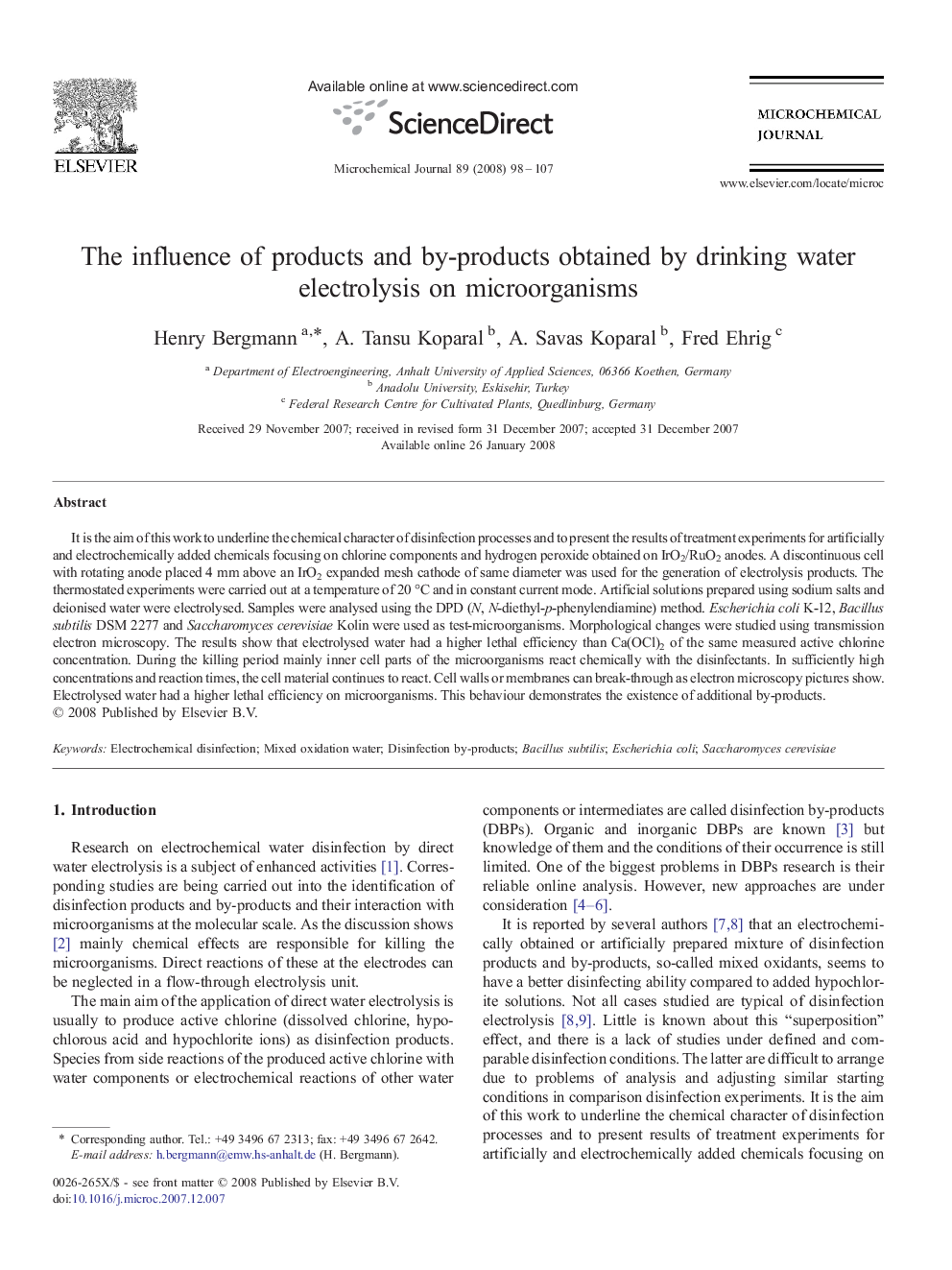| Article ID | Journal | Published Year | Pages | File Type |
|---|---|---|---|---|
| 1228179 | Microchemical Journal | 2008 | 10 Pages |
It is the aim of this work to underline the chemical character of disinfection processes and to present the results of treatment experiments for artificially and electrochemically added chemicals focusing on chlorine components and hydrogen peroxide obtained on IrO2/RuO2 anodes. A discontinuous cell with rotating anode placed 4 mm above an IrO2 expanded mesh cathode of same diameter was used for the generation of electrolysis products. The thermostated experiments were carried out at a temperature of 20 °C and in constant current mode. Artificial solutions prepared using sodium salts and deionised water were electrolysed. Samples were analysed using the DPD (N, N-diethyl-p-phenylendiamine) method. Escherichia coli K-12, Bacillus subtilis DSM 2277 and Saccharomyces cerevisiae Kolin were used as test-microorganisms. Morphological changes were studied using transmission electron microscopy. The results show that electrolysed water had a higher lethal efficiency than Ca(OCl)2 of the same measured active chlorine concentration. During the killing period mainly inner cell parts of the microorganisms react chemically with the disinfectants. In sufficiently high concentrations and reaction times, the cell material continues to react. Cell walls or membranes can break-through as electron microscopy pictures show. Electrolysed water had a higher lethal efficiency on microorganisms. This behaviour demonstrates the existence of additional by-products.
